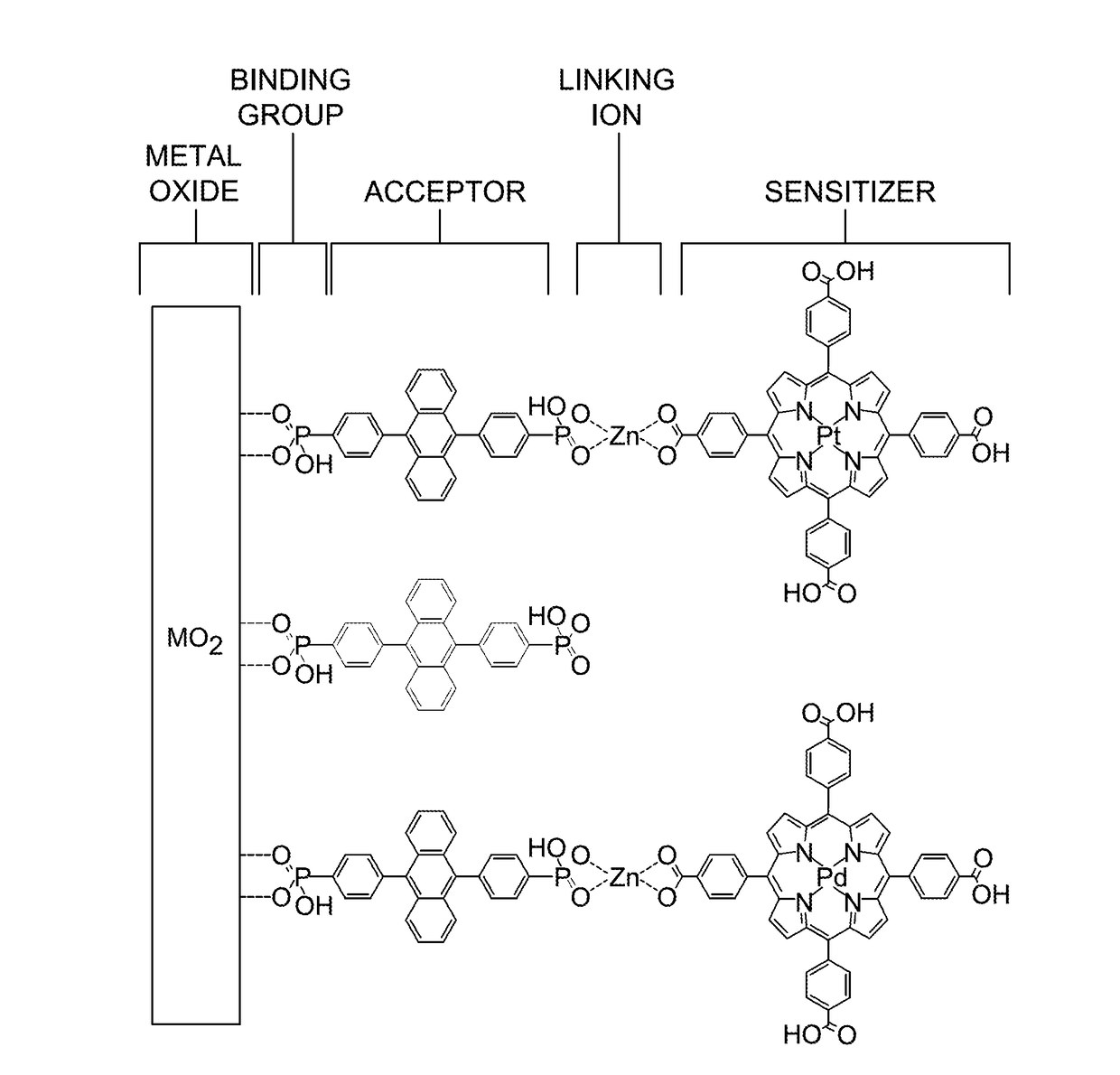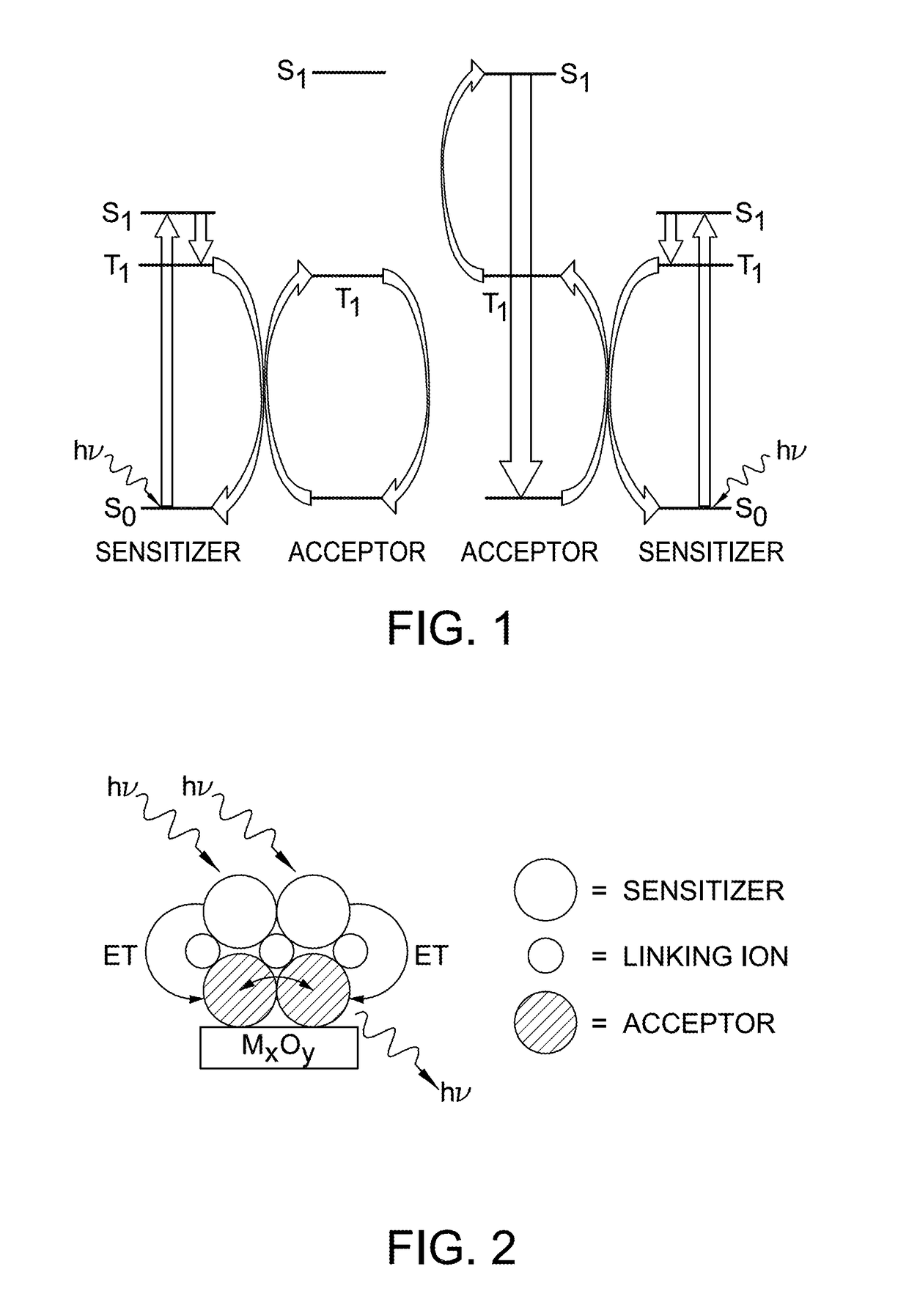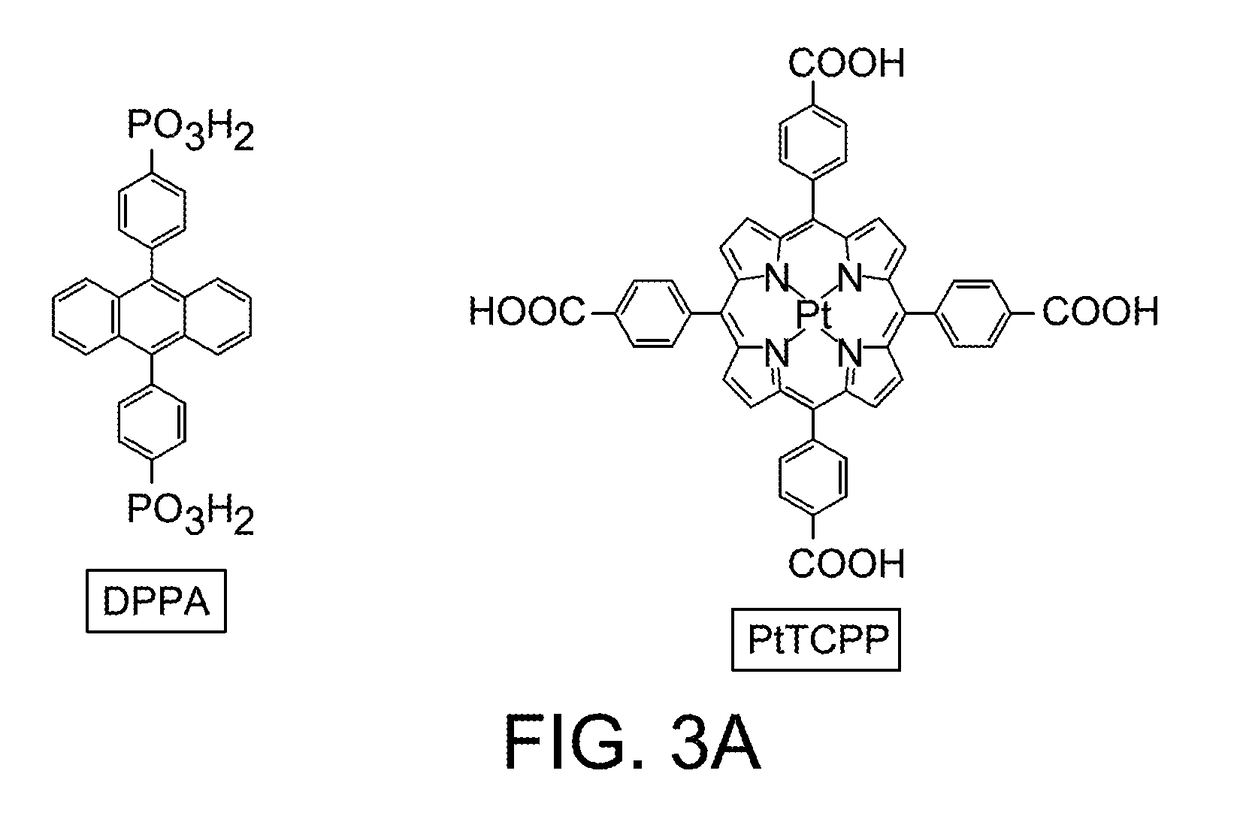Molecular photon upconversion using organic-inorganic hybrid interfaces
a hybrid interface and photon upconversion technology, applied in the direction of light-sensitive devices, solid-state devices, electrolytic capacitors, etc., can solve the problems of inability to achieve high-intensity light, and inability to meet the requirements of high-intensity ligh
- Summary
- Abstract
- Description
- Claims
- Application Information
AI Technical Summary
Benefits of technology
Problems solved by technology
Method used
Image
Examples
examples
[0092]The following non-limiting examples are provided to further illustrate the present invention.
[0093]Experimental Section 1.
[0094]Materials and Methods:
[0095]Materials.
[0096]1,4-dibromobenzene, anthraquinone, n-butyl lithium, nickel bromide, triethylphosphite, trimethylsilyl bromide, zinc acetate dehydrate, H2PtCl6 and tetrabutylammonium perchlorate (Sigma-Aldrich) and Pt(II) meso-tetra(4-carboxyphenyl)porphine (Frontier Scientific), were purchased from their respective suppliers, in parentheses, and used as received. All other reagents and solvents (analytical reagent grade) have been purchased and used without further purification from Alfa Aesar. Tetrahydrofuran and dichloromethane used in synthesis have been dried and degassed prior to use. Fluorine-doped tin oxide (FTO) coated glass (sheet resistance 15 Ω / Y) was purchased from Hartford Glass Co. Meltonix film (1170-25), Ti-Nanoxide T solgel paste (11421) and Vac'n Fill Syringe (65209) were purchased from Solaronix. Micro gl...
PUM
 Login to View More
Login to View More Abstract
Description
Claims
Application Information
 Login to View More
Login to View More - R&D
- Intellectual Property
- Life Sciences
- Materials
- Tech Scout
- Unparalleled Data Quality
- Higher Quality Content
- 60% Fewer Hallucinations
Browse by: Latest US Patents, China's latest patents, Technical Efficacy Thesaurus, Application Domain, Technology Topic, Popular Technical Reports.
© 2025 PatSnap. All rights reserved.Legal|Privacy policy|Modern Slavery Act Transparency Statement|Sitemap|About US| Contact US: help@patsnap.com



